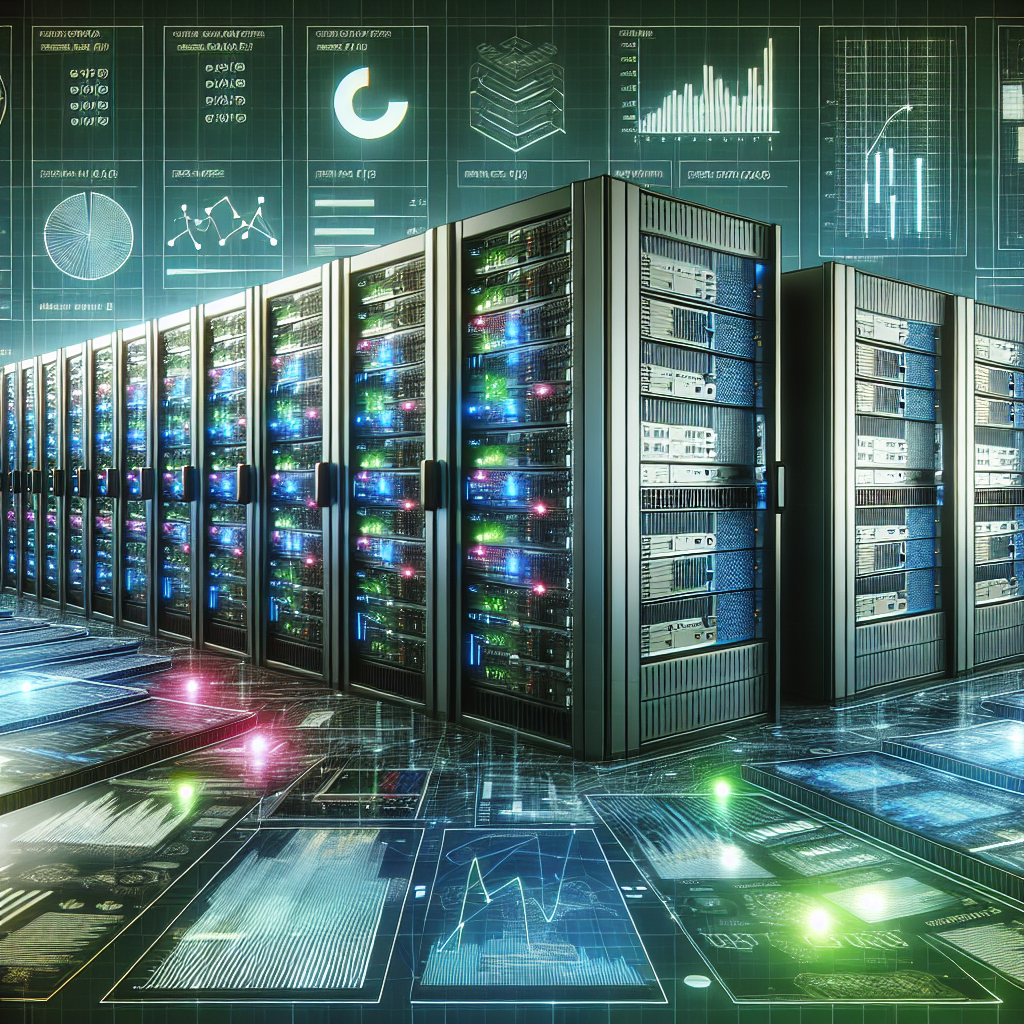Your cart is currently empty!
Tag: Monitor

Key Metrics to Monitor in Your Data Center for Peak Performance
Data centers are the backbone of many organizations, playing a critical role in storing, processing, and managing vast amounts of data. To ensure peak performance and efficiency, it is essential to monitor key metrics that provide insights into the health and performance of your data center.Here are some key metrics to monitor in your data center for peak performance:
1. Power Usage Effectiveness (PUE): PUE is a metric that measures how efficiently a data center uses energy. A lower PUE value indicates better energy efficiency. Monitoring PUE can help identify areas where energy consumption can be optimized, leading to cost savings and reduced environmental impact.
2. Temperature and Humidity Levels: Maintaining optimal temperature and humidity levels is crucial for the proper functioning of data center equipment. Monitoring these metrics can help prevent equipment failures and downtime caused by overheating or excessive moisture.
3. Server Utilization: Monitoring server utilization can help identify underutilized or overburdened servers, allowing for better resource allocation and improved performance. By optimizing server utilization, organizations can reduce energy consumption and enhance overall efficiency.
4. Network Latency: Network latency refers to the delay in data transmission between devices on a network. Monitoring network latency can help identify bottlenecks and performance issues that impact data transfer speeds and user experience. By addressing latency issues, organizations can improve network performance and reliability.
5. Disk I/O Performance: Disk I/O performance measures the speed at which data is read from or written to storage devices. Monitoring disk I/O performance can help identify storage bottlenecks and optimize data access speeds. By improving disk I/O performance, organizations can enhance overall system performance and responsiveness.
6. Security Metrics: Monitoring security metrics such as intrusion attempts, malware infections, and unauthorized access can help ensure the safety and integrity of data stored in the data center. By proactively monitoring security metrics, organizations can identify and address potential security threats before they cause harm.
7. Environmental Monitoring: Monitoring environmental factors such as air quality, dust levels, and temperature fluctuations can help maintain a healthy and safe working environment for data center staff and equipment. By monitoring environmental metrics, organizations can prevent equipment failures and downtime caused by environmental hazards.
In conclusion, monitoring key metrics in your data center is essential for ensuring peak performance, efficiency, and reliability. By keeping a close eye on these metrics and making necessary adjustments, organizations can optimize their data center operations and deliver superior services to their customers.

Data Center Audits: Key Metrics and KPIs to Monitor for Success
Data centers are the backbone of modern businesses, housing critical IT infrastructure and data that is essential for operations. With the increasing complexity and importance of data centers, it has become crucial for organizations to regularly audit and monitor their data center performance to ensure efficiency, security, and compliance. In this article, we will discuss the key metrics and key performance indicators (KPIs) that organizations should monitor for successful data center audits.1. Power Usage Effectiveness (PUE): PUE is a widely used metric that measures the efficiency of a data center’s energy usage. A lower PUE value indicates higher energy efficiency, which can lead to cost savings and reduced environmental impact. Monitoring PUE regularly can help organizations identify areas for improvement in energy efficiency and optimize their data center operations.
2. Cooling Efficiency: Cooling accounts for a significant portion of a data center’s energy consumption. Monitoring metrics such as temperature, humidity, and airflow can help organizations ensure optimal cooling efficiency and prevent overheating of equipment. Regularly auditing cooling systems and implementing improvements can help reduce energy costs and prolong the lifespan of IT equipment.
3. Server Utilization: Monitoring server utilization metrics such as CPU usage, memory usage, and disk space can help organizations identify underutilized resources and optimize server performance. By regularly auditing server utilization, organizations can ensure efficient resource allocation and avoid wastage of valuable IT resources.
4. Uptime and Downtime: Uptime is a critical KPI for data centers, as any downtime can result in significant financial losses and damage to reputation. Monitoring uptime metrics and implementing measures to minimize downtime, such as redundant power supplies and backup generators, can help organizations ensure high availability of their IT infrastructure.
5. Security and Compliance: Data centers store sensitive information and are a prime target for cyberattacks. Monitoring security metrics such as intrusion attempts, access logs, and compliance with regulatory standards can help organizations prevent security breaches and ensure data protection. Conducting regular security audits and implementing robust security measures are essential to safeguarding data center assets.
6. Environmental Monitoring: Monitoring environmental factors such as temperature, humidity, and air quality is essential for maintaining optimal conditions for IT equipment. Regular audits of environmental metrics can help organizations identify potential risks to equipment health and implement measures to mitigate them.
In conclusion, data center audits are essential for ensuring the efficiency, security, and compliance of IT infrastructure. By monitoring key metrics and KPIs such as PUE, cooling efficiency, server utilization, uptime, security, and environmental factors, organizations can identify areas for improvement and optimize their data center operations for success. Regular audits and proactive measures can help organizations stay ahead of challenges and ensure the reliability and performance of their data centers.
